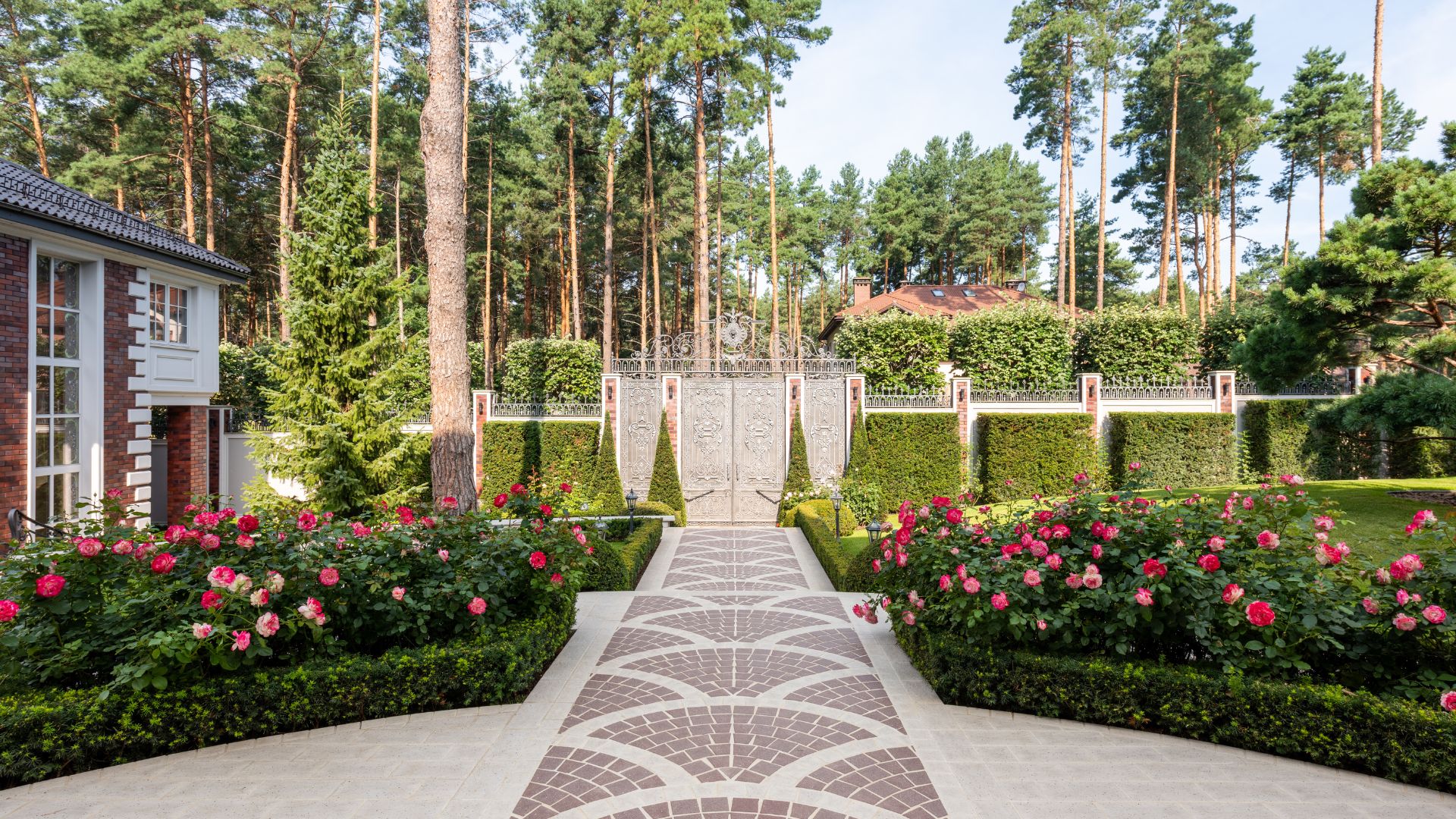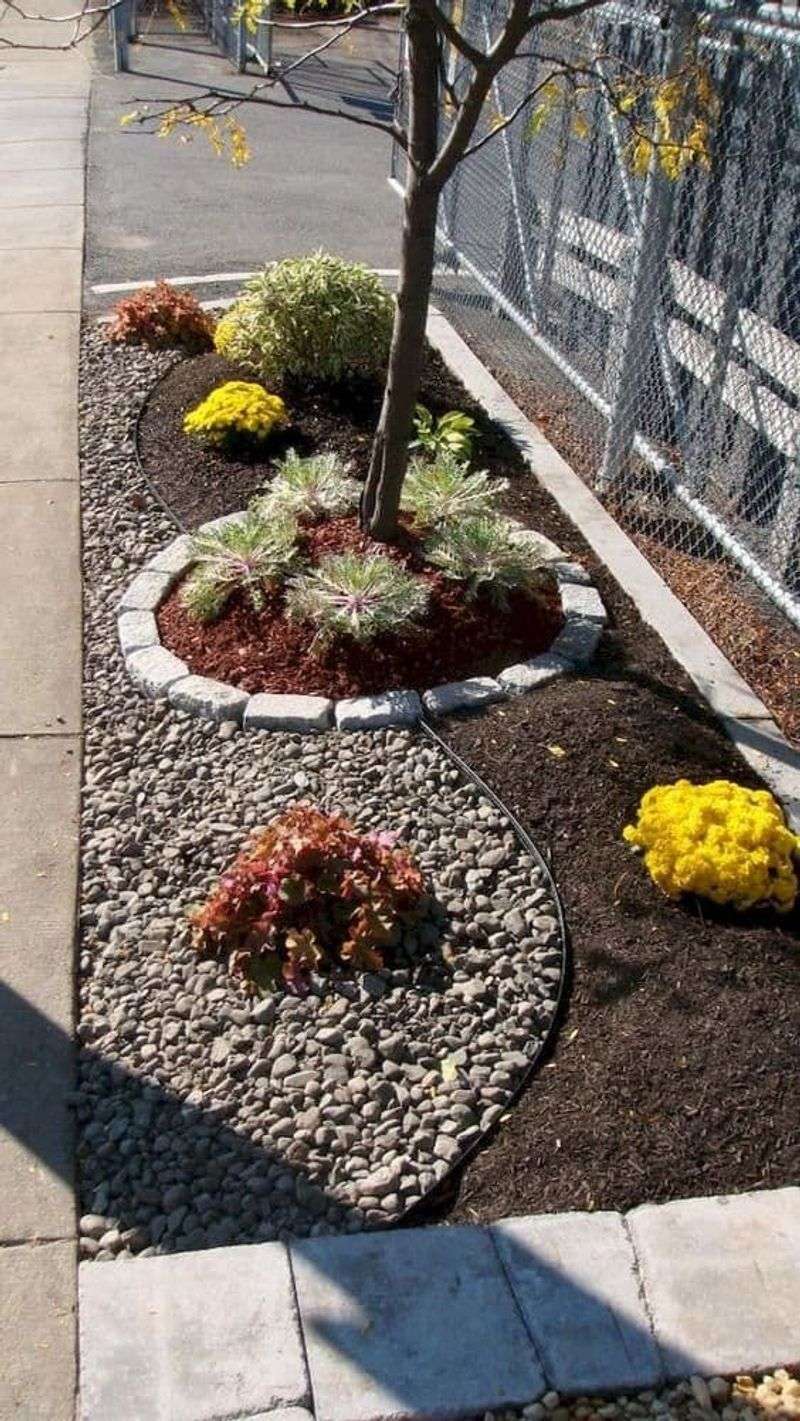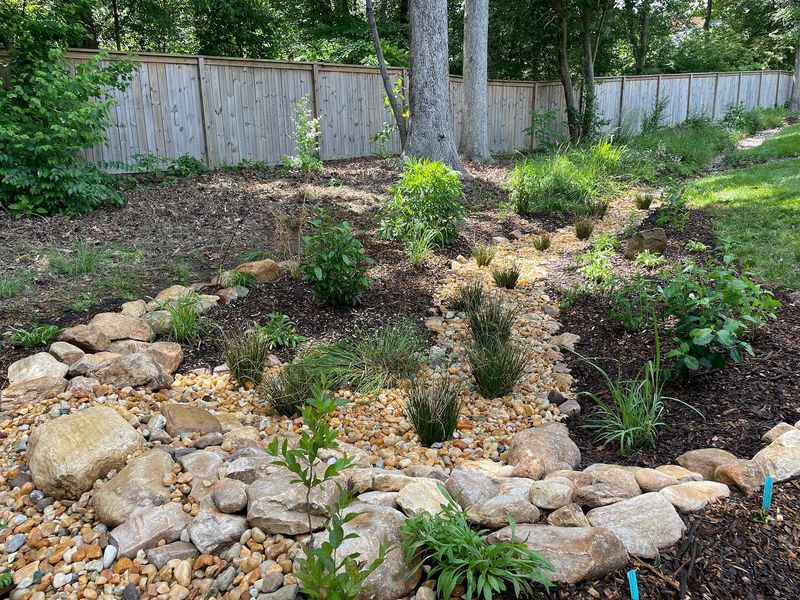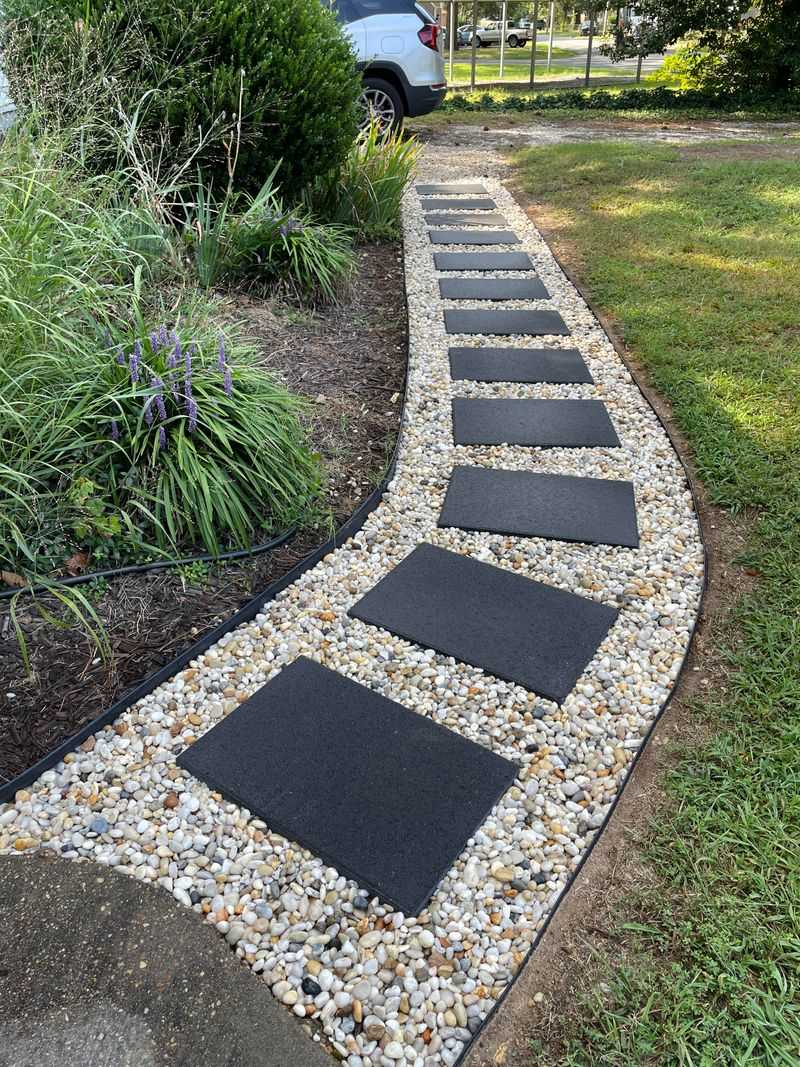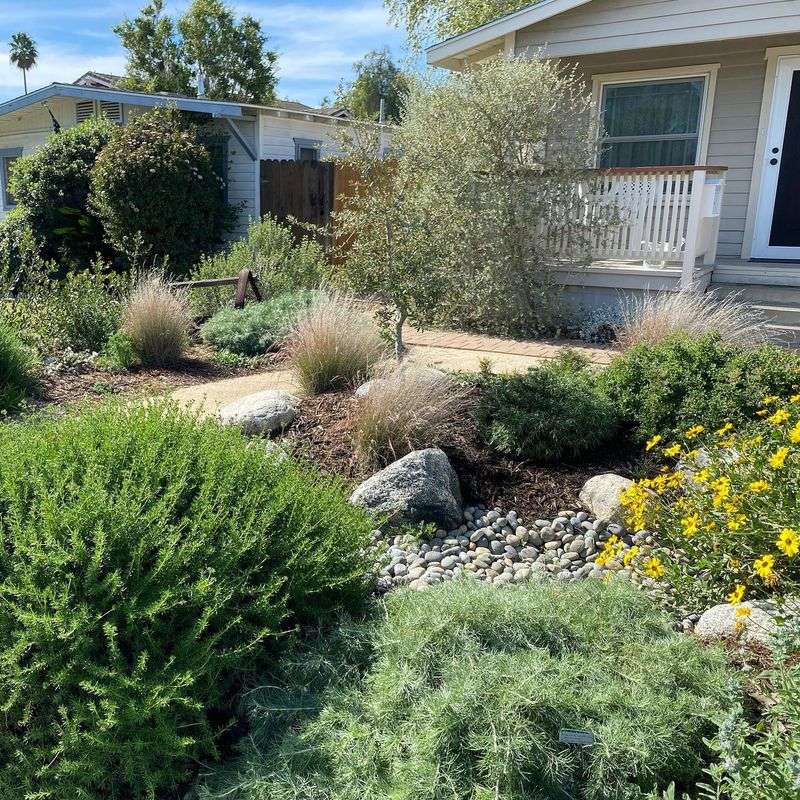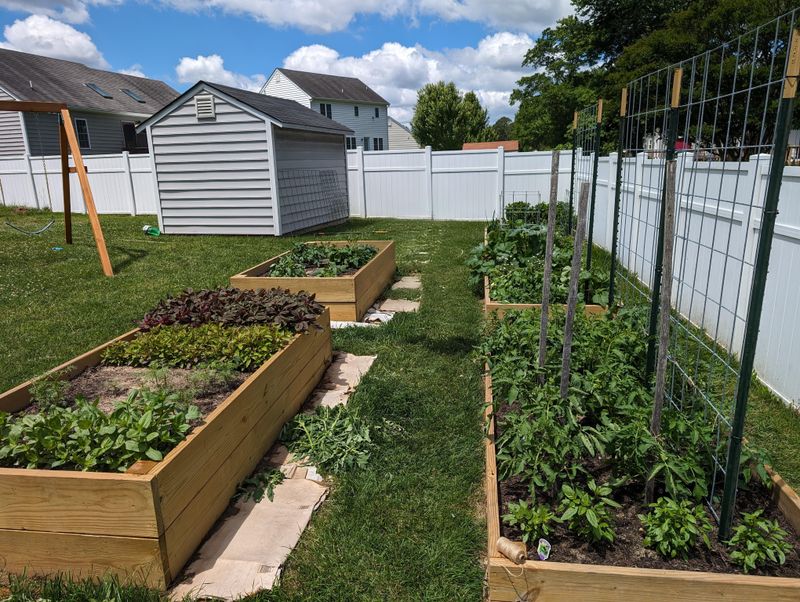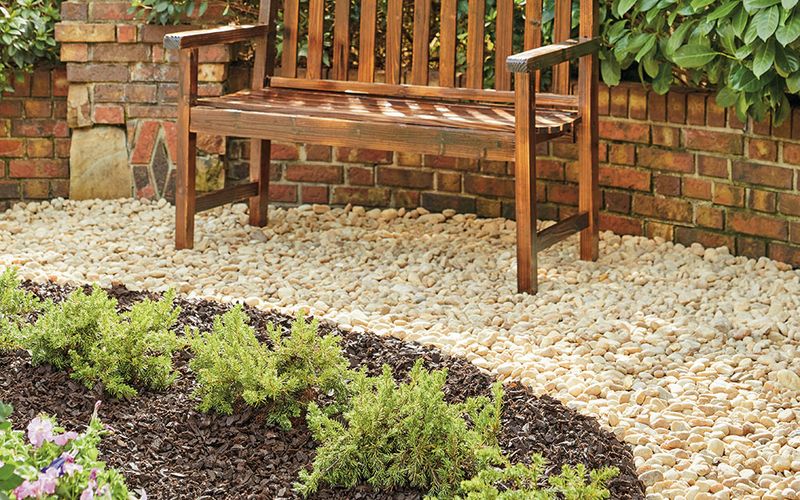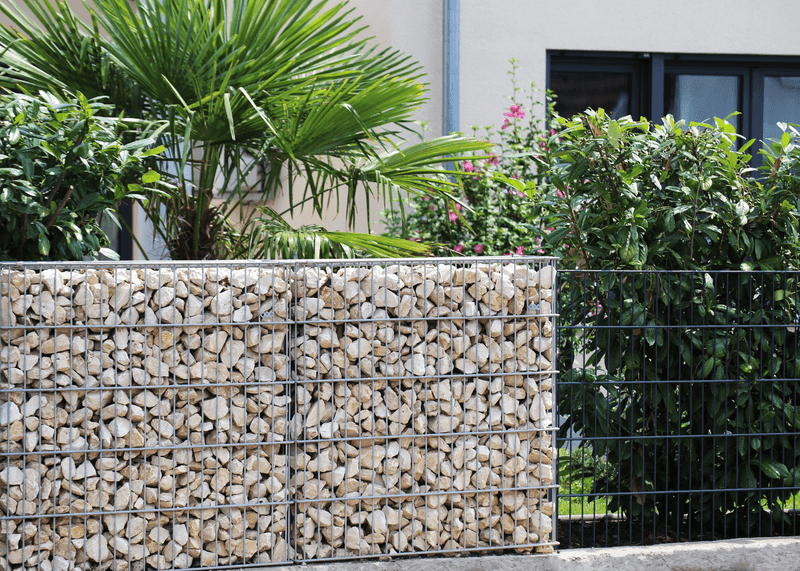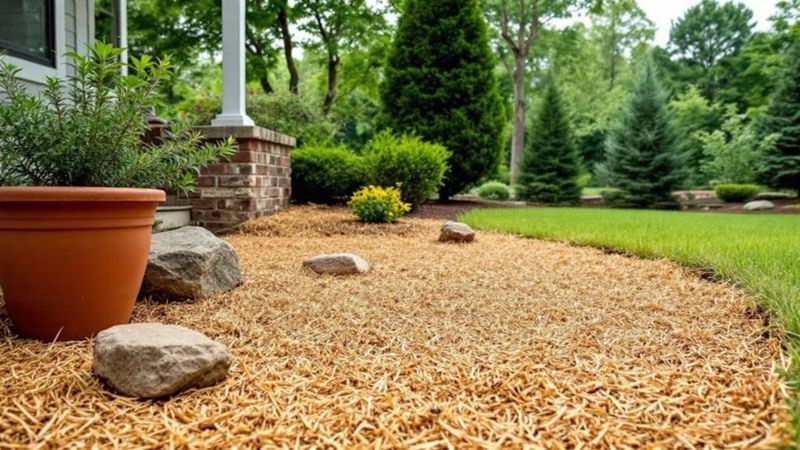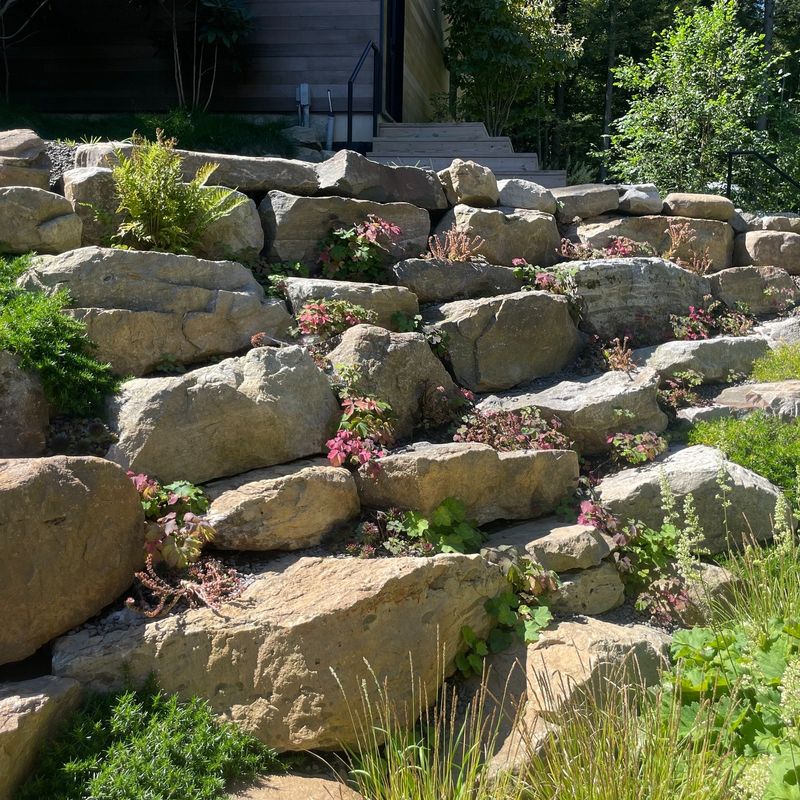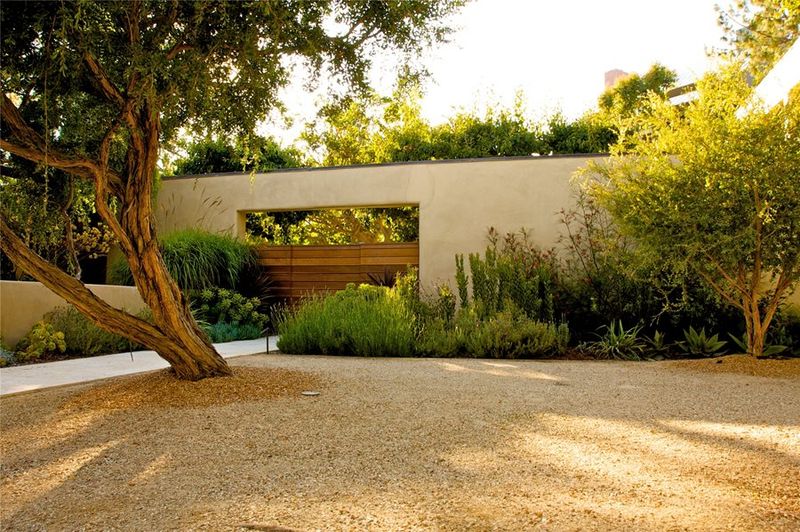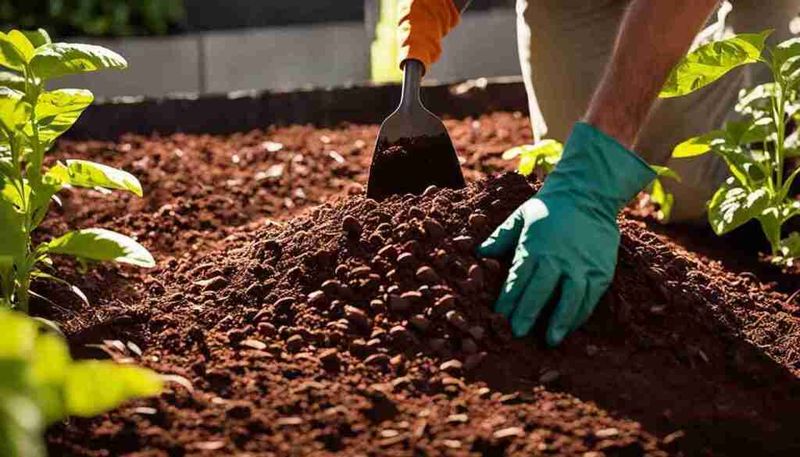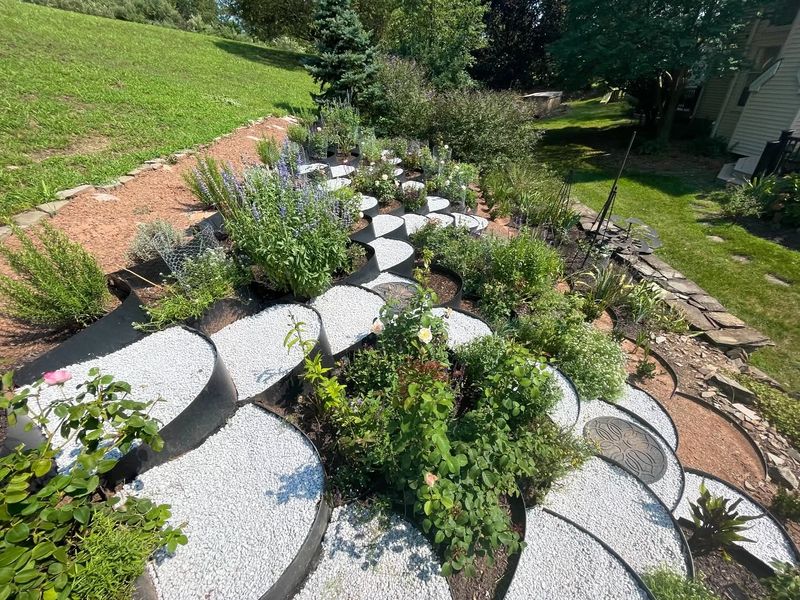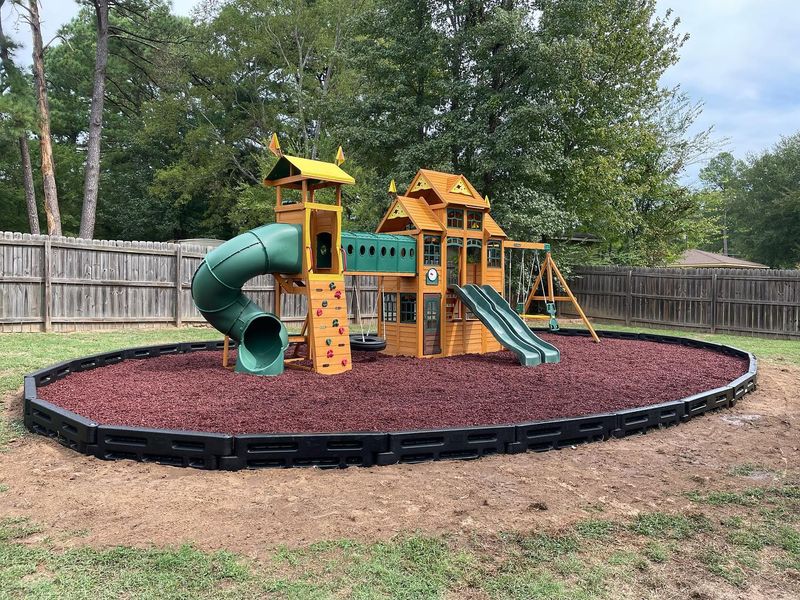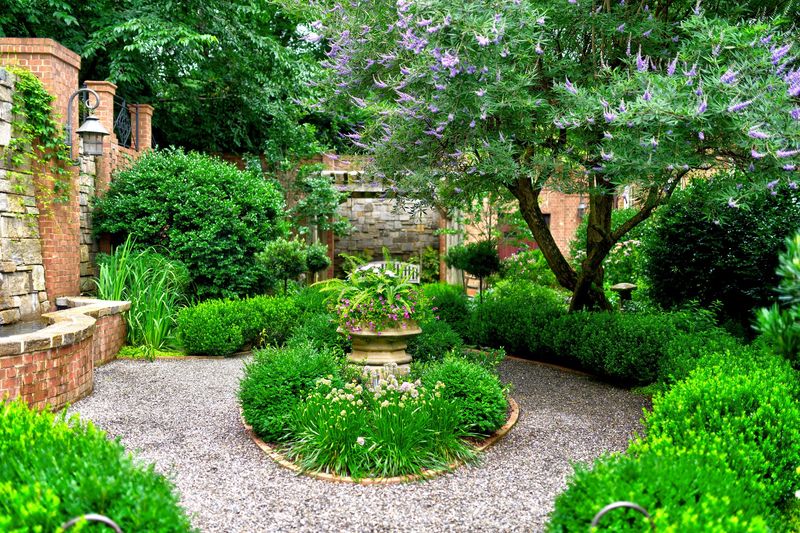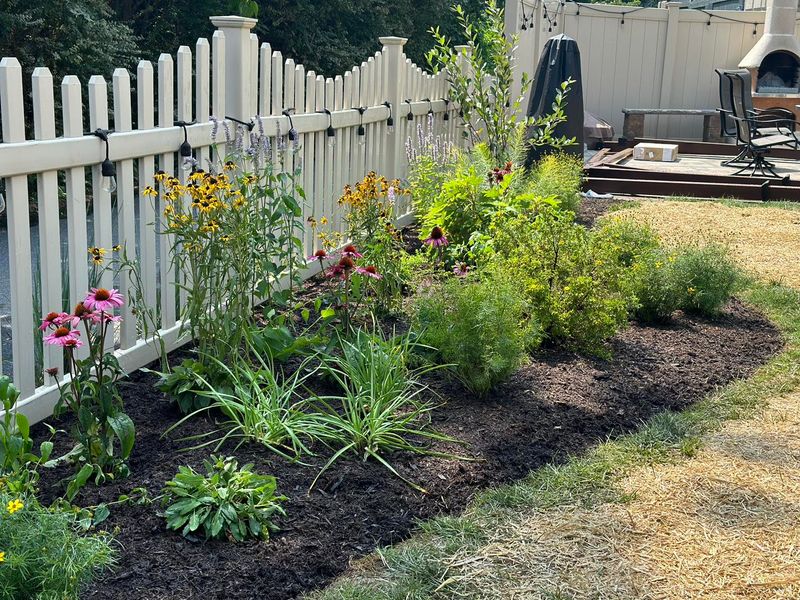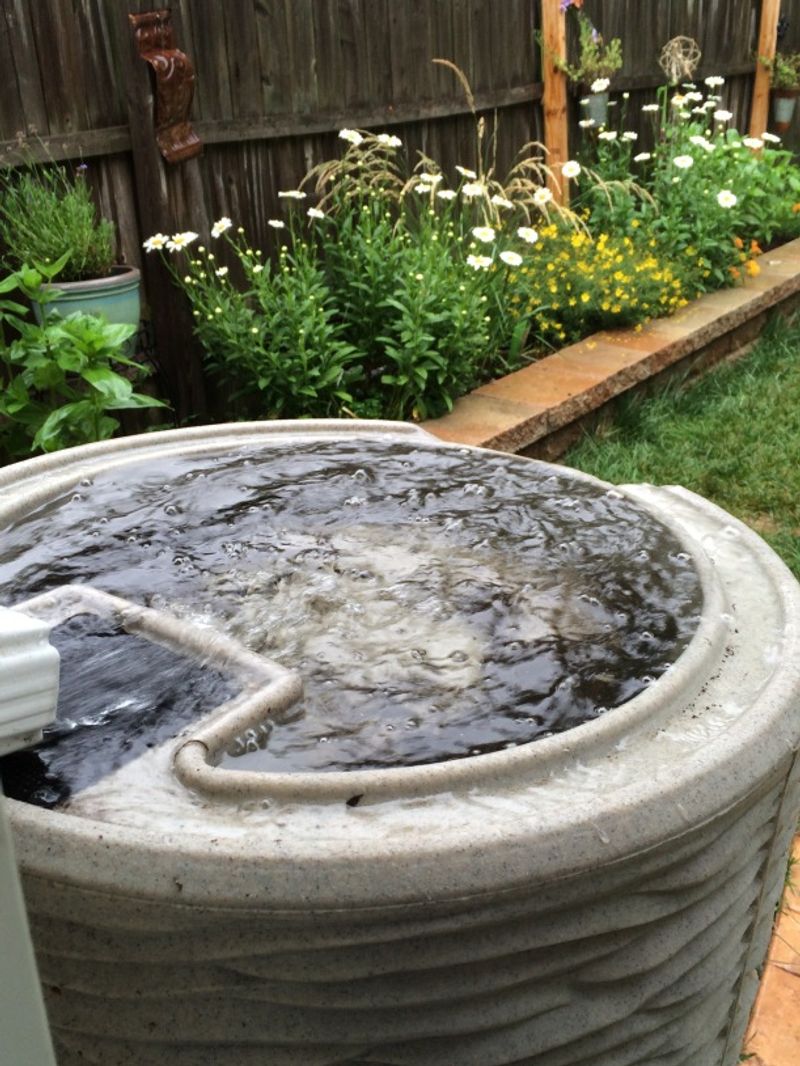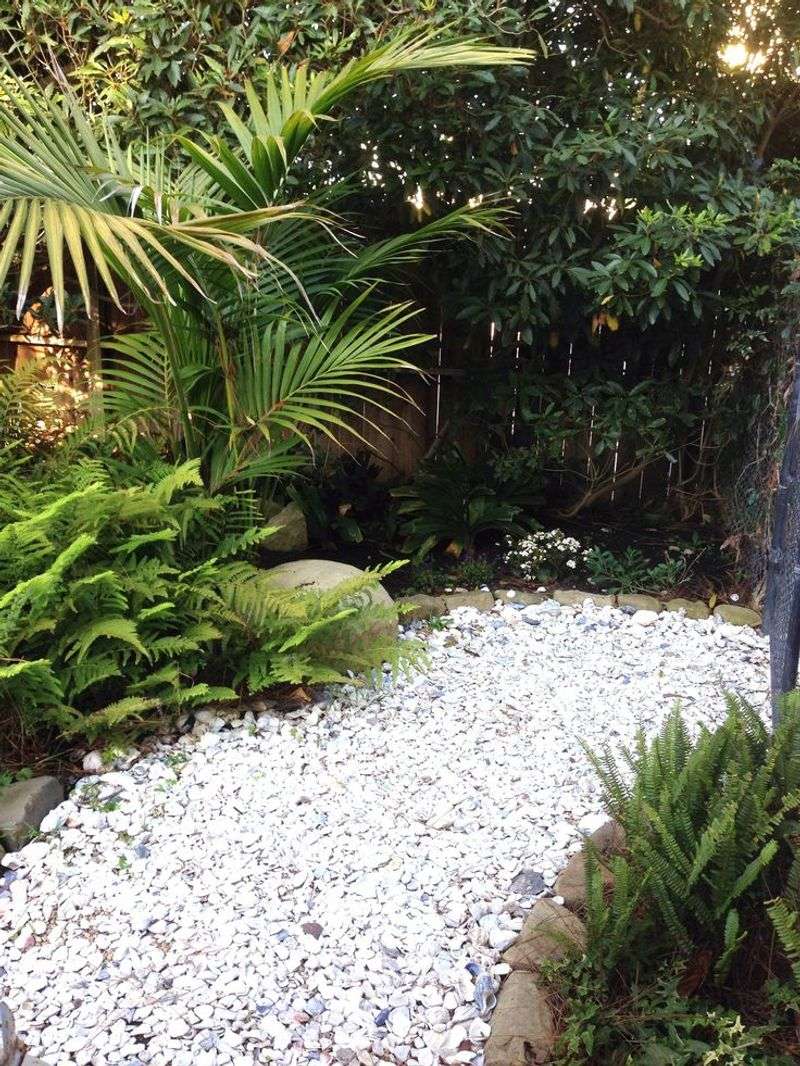Creating an eco-friendly front yard doesn’t mean settling for something dull or lifeless—I’ve found it actually opens the door to really creative design. With the right mix of rocks and mulch, you can build a space that’s both beautiful and practical.
These simple, low-maintenance choices not only help conserve water but also cut back on weeding and mowing. It’s a win for your garden, your schedule, and the environment.
1. Drought-Resistant Rock Garden
Creating a rock garden with drought-resistant plants saves water and maintenance time. Native succulents and ornamental grasses nestle beautifully between carefully arranged stones.
The rocks retain heat during cool nights and provide essential drainage for plants that hate wet feet. I installed one last spring and haven’t had to water it once during our dry summer months.
Choose locally sourced stones to reduce transportation impacts and select native plants adapted to your specific climate conditions.
2. Mulched Tree Islands
Tree islands create focal points while protecting soil health. Surround trees with wide circles of organic mulch extending to the drip line, keeping it a few inches away from the trunk.
The mulch prevents soil compaction, retains moisture, and gradually breaks down to feed the tree. My oak trees have shown noticeably better growth since I started this practice three years ago.
Add decorative rocks around the perimeter of the mulch circle for a finished look that prevents mulch from washing away during heavy rains.
3. Rain Garden With River Rocks
Collecting rainwater in a strategically placed depression prevents runoff and recharges groundwater. Line the bottom with river rocks to prevent erosion and add water-loving native plants around the edges.
During rainstorms, water collects temporarily before slowly infiltrating the soil. For me, this solved the persistent puddle problem near our driveway while creating habitat for local birds.
Size your rain garden according to your yard’s drainage patterns and local rainfall amounts for best results.
4. Gravel Pathways With Stepping Stones
Permeable walkways allow water to soak into the ground rather than run off into storm drains. Use locally sourced gravel between flat stepping stones for a path that drains naturally.
Edge the path with larger rocks to keep gravel contained and prevent grass encroachment. We installed ours five years ago, and it still looks fresh with minimal maintenance beyond occasional raking.
Choose angular gravel that locks together rather than rounded pebbles that shift underfoot for a more stable walking surface.
5. Mulched Native Plant Borders
Native plant borders require less water and maintenance than traditional gardens. Group plants with similar water needs together and cover the soil with a 2-3 inch layer of natural mulch.
The mulch suppresses weeds, conserves moisture, and gradually improves soil quality as it breaks down. After switching to this approach, I’ve noticed more butterflies and beneficial insects visiting our yard.
Leave small gaps around plant stems to prevent rot and refresh the mulch layer annually as it decomposes.
6. Dry Creek Bed Installation
Dry creek beds manage water flow during storms while adding visual interest year-round. Arrange rocks of various sizes to mimic a natural streambed, with larger boulders as anchors and smaller stones filling spaces.
Line the bottom with landscape fabric to prevent weed growth before adding stones. During our last heavy downpour, the creek bed channeled water away from the foundation perfectly while looking completely natural.
Plant moisture-loving natives along the edges to create a lush, established look that enhances the water-management function.
7. Mulched Vegetable Garden Beds
Front yard edible gardens combine beauty and function when properly designed. Raised beds with stone borders filled with organic soil and topped with straw or leaf mulch create productive growing spaces.
The mulch prevents water loss, suppresses weeds, and adds nutrients as it breaks down. My neighbors were skeptical until they saw how attractive our rainbow chard and rosemary looked alongside traditional ornamentals.
Choose vegetables with attractive foliage like purple kale or rainbow chard for aesthetic appeal that also provides food.
8. Rock-Mulch Alternating Bands
Creating alternating bands of different colored rocks and organic mulch makes a striking visual pattern. Use landscape edging between materials to maintain clean lines and prevent mixing.
The contrast between dark mulch and light-colored stones creates interest without requiring water or maintenance. I’ve had countless people stop to ask about this simple design feature in our yard.
Choose materials with similar depths so one doesn’t spill over into the other, and refresh organic mulch as needed when it decomposes.
9. Gabion Rock Walls
Wire cages filled with local stones create permeable retaining walls that allow water drainage while preventing erosion. These gabion structures can be built to any height needed for your landscape.
Use them to create terraces on sloped yards or as decorative elements that double as seating. The industrial-meets-natural look has a modern appeal that works well with many architectural styles.
Fill with rocks of consistent size for a uniform appearance or mix sizes for a more natural, varied texture that catches light differently throughout the day.
10. Pine Straw Mulch Under Shrubs
Pine straw creates an ideal environment for acid-loving plants like azaleas and rhododendrons. This renewable resource breaks down more slowly than wood mulch and stays in place better on slopes.
Apply a 3-4 inch layer around shrubs, refreshing annually as it decomposes. The reddish-brown color provides a warm contrast to green foliage while improving soil health.
Harvested from sustainable pine forests, this mulch option has a lower environmental footprint than bark mulch that often comes from old-growth forests.
11. Succulent Rock Wall Garden
Vertical gardens maximize space while creating stunning visual impact. Plant drought-tolerant succulents between rocks in a retaining wall or stone planter for a low-maintenance display.
The rocks provide perfect drainage for succulents while storing heat that helps protect plants during cooler nights. When we installed ours last year, I was amazed at how quickly the plants filled in with almost no care.
Choose varieties with different colors and textures for year-round interest that requires minimal water once established.
12. Crushed Granite Seating Area
Informal seating areas invite neighbors to connect and enjoy the outdoors. Crushed granite creates a stable, permeable surface for chairs and small tables without the environmental impact of concrete.
Edge the area with larger stones or boulders for definition and to prevent material migration. The fine granite packs down over time while still allowing water to penetrate to the soil below.
Add potted plants around the perimeter to soften the look and provide seasonal color that can be changed as desired.
13. Cocoa Hull Mulch for Flower Beds
Cocoa hull mulch offers a rich, dark color and pleasant chocolate scent when freshly applied. This byproduct of chocolate production makes an excellent renewable mulch option for flower beds.
Apply a 2-inch layer around perennials and annuals to retain moisture and suppress weeds. The mulch gradually breaks down, improving soil structure and adding nutrients.
Note that cocoa hulls contain compounds toxic to dogs, so choose another option if pets frequent your garden or neighborhood.
14. Terraced Rock Gardens
Sloped yards become manageable and beautiful with terraced rock gardens. Stack flat stones to create retaining walls that prevent erosion while creating level planting areas.
Fill terraces with drought-tolerant plants and top with fine gravel or decomposed granite mulch. The stones absorb heat during the day and release it at night, creating microclimate pockets that certain plants love.
Design with varying heights and plant textures to create visual flow that guides the eye through the landscape naturally.
15. Rubber Mulch Play Areas
Safe play spaces can be incorporated into front yard designs using recycled rubber mulch. This long-lasting material provides excellent fall protection while keeping tires out of landfills.
Contain the area with large rocks or boulders that double as informal seating or play elements. Unlike wood mulch, rubber doesn’t attract insects or decompose, requiring replacement only every 8-10 years.
Choose natural colors like brown or green that blend with the landscape rather than bright primary colors that can look out of place.
16. Pea Gravel Mediterranean Garden
Mediterranean-inspired gardens thrive in sunny, dry locations with minimal water. Use pea gravel as a base with drought-resistant herbs like lavender, rosemary, and thyme planted in groups.
The small, rounded stones allow excellent drainage while preventing evaporation from the soil beneath. When the sun hits the garden after rain, the most amazing herbal scent fills our front yard.
Add larger feature rocks as focal points and to create planting pockets where herbs can establish deep root systems.
17. Bark Mulch Pollinator Garden
Supporting local pollinators creates a living ecosystem right in your front yard. Plant native flowering species in groups and mulch with locally produced bark to retain moisture and suppress weeds.
The rough texture of bark mulch provides habitat for beneficial insects while protecting soil from temperature extremes. Since creating our pollinator patch, I’ve identified six different bee species that now regularly visit.
Refresh the mulch layer annually, applying it 3 inches deep but keeping it away from direct contact with plant stems.
18. Stone-Edged Rain Barrel System
Capturing rainwater reduces runoff while providing free irrigation for gardens. Place rain barrels on stone platforms beneath downspouts and surround with river rocks to manage overflow.
The stones disperse excess water during heavy downpours, preventing erosion around your foundation. We’ve saved significantly on our water bill since installing this system, especially during summer dry spells.
Paint barrels to match your home or surround them with tall grasses for a more integrated look that neighbors won’t find objectionable.
19. Crushed Seashell Paths
Coastal-inspired walkways bring unique texture and sound to garden paths. Crushed seashells from sustainable sources create bright white paths that reflect moonlight and crunch pleasantly underfoot.
Edge paths with driftwood or smooth stones to contain the shells and create definition. The alkaline nature of shells gradually raises soil pH along path edges, benefiting certain plants like clematis and delphiniums.
The shells decompose very slowly, requiring minimal replacement while gradually adding calcium to surrounding soil.

